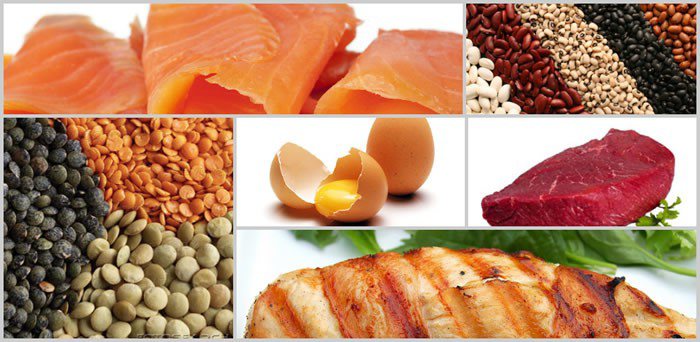Good Protein: Foods for Fat Loss

Protein is considered the number one macronutrient for fat loss.
- Protein keeps people feeling fuller longer,
- It isn’t readily used for energy nor stored as fat.
- It facilitates the building and repair of muscle tissue, which in turn, burns more calories.
However, as with ANY food you can have too much of a good thing.
How Much Protein?
The human body has a limit to the amount of protein it can actually utilize daily. One of the most well respected research studies conducted by Dr. Peter Lemon determined that even athletes benefited from just .73 grams of protein per pound of body weight daily. src.
A more general rule of thumb suggests that people aim for 0.8g per pound of body weight (as per meta-analysis of protein requirements). Excess protein isn’t harmful for those with proper functioning kidneys, but the notion that dieters benefit from massive quantities of protein is a myth perpetuated by the supplement industry.
Most people can shoot for around 20-30 grams of protein per meal. If this is something you wish to manage, use the macronutrient calculator.
Some foods are better protein sources than others (see bio-availability of different meats). However, some higher-protein food sources may have higher carbohydrate and fat content.
Learn to make good choices by using the list below.
Good Sources of Protein
Red Meat
Fish
- Salmon
- Sardines
- Tuna
- Tilapia
- Swai
- Catfish
- All other species of fish
Poultry
- Chicken (skinless)
- Turkey breast
- Eggs
Dairy
- Whey protein powder
- Cottage cheese (low fat)
- Skim Milk
- Greek yogurt (nonfat)
Vegetable: (less concentrated)
- Beans (lentils, adzuki beans & others)
- Quinoa
- Chia
- Nuts (peanuts, almonds, pistachios)
- Peas (split peas, chickpeas)
- Soybeans
- Grains & seeds (be aware of carb and fat content)
Protein sources to Avoid or Limit
- Luncheon meats
- Whole milk
- Ground beef
- Ham, bacon, pork chop
- Cheese
- Hot Dogs, Sausage and other processed meats
The Simple Rule
If in doubt choose protein from foods that are unprocessed or minimally processed and as lean as possible.
See also the best choices for carbohydrates or fats.
- Tipton, K. D., & Witard, O. C. (2007). Protein requirements and recommendations for athletes: relevance of ivory tower arguments for practical recommendations. Clinics in sports medicine, 26(1), 17-36. Link
- Esmarck, B., Andersen, J. L., Olsen, S., Richter, E. A., Mizuno, M., & Kjær, M. (2001). Timing of postexercise protein intake is important for muscle hypertrophy with resistance training in elderly humans. The Journal of physiology, 535(1), 301-311.Link
- Rand, W. M., Pellett, P. L., & Young, V. R. (2003). Meta-analysis of nitrogen balance studies for estimating protein requirements in healthy adults. The American journal of clinical nutrition, 77(1), 109-127. Link